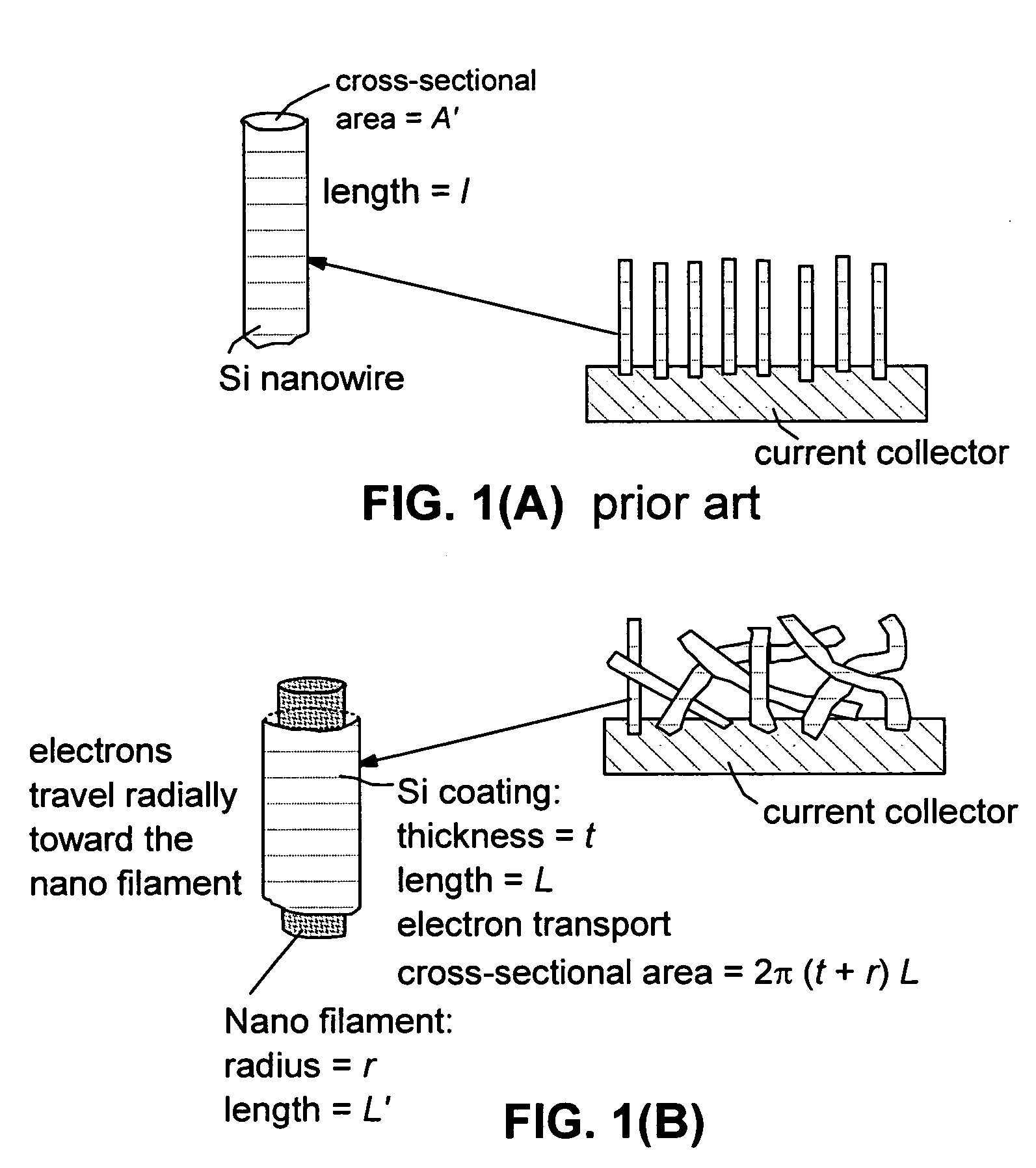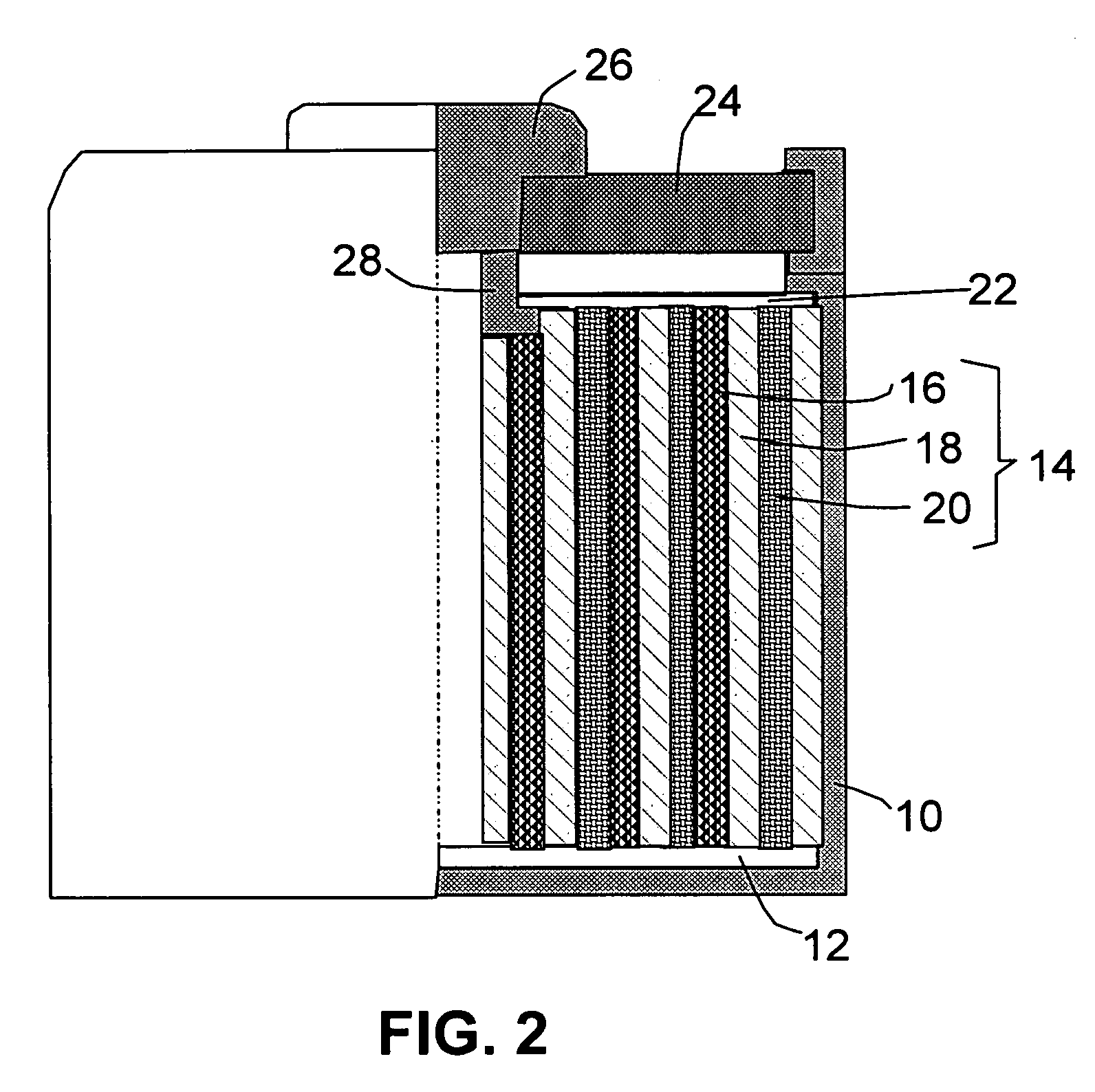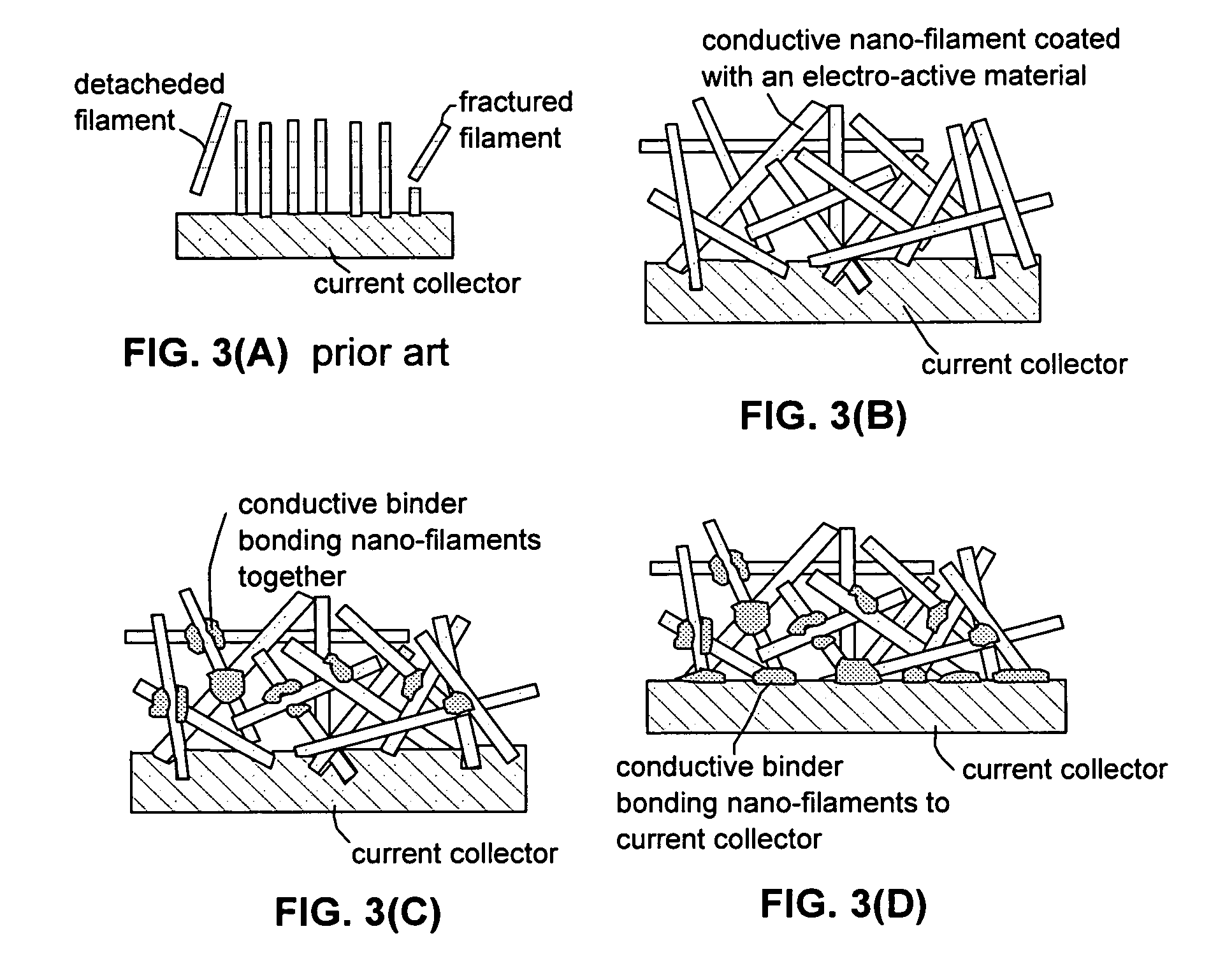Process for producing hybrid nano-filament electrodes for lithium batteries
a lithium battery and nano-filament electrode technology, applied in the direction of electrophoresis, electrolysis, chemical vapor deposition coating, etc., can solve the problems of shortening the charge-discharge cycle life, shortening the reversible capacity of art composite electrodes, and reducing the reversible capacity. achieve the effect of significant reducing internal energy loss or internal heating
- Summary
- Abstract
- Description
- Claims
- Application Information
AI Technical Summary
Benefits of technology
Problems solved by technology
Method used
Image
Examples
example 1
Conductive Web from Polyimide Nano-wires
[0166]Poly (amic acid) (PAA) precursors were prepared by copolymerizing of pyromellitic dianhydride (Aldrich) and 4,4′-oxydianiline (Aldrich) in a mixed solvent of tetrahydrofurane methanol (THF / MeOH, 8 / 2 by weight). The PAA solution was filled into the pores of a template membrane (pore size of approximately 400 nm), which was commercially available polycarbonate filters (Poretics). An approximately 1 cm2 piece of the polycarbonate filter was immersed in the precursor solution. Solvent removal and imidization from PAA were performed concurrently by stepwise heat treatments under air flow at 40° C. for 12 h, 100° C. for 1 h, 250° C. for 2 h, and 350° C. for 1 h. The thermally cured polyimide (PI) web samples were carbonized at 1,000° C. to obtain Sample c-PI-wire with an average nano-wire diameter of 127 nm. The resulting PI nano-wires were formed into a web using the method described earlier (schematically shown in FIG. 4).
example 2
Conductive Nano-Wires from Template-Assisted Fabrication of Polyacrylonitrile (PAN) Nano-Wires
[0167]Several types of meso-porous template membranes are commercially available (e.g., from (Poretics, Inc., Whatman, and Osmonics). Our PAN nanowires were grown in track-etched polycarbonate membranes (pore size 200 nm). PAN was dissolved in N,N,-dimethyl formamide (DMF) to obtain a solution at 80° C. using a magnetic stirrer 30 minutes. The template membrane was immersed in the PAN-DMF solution at 60° C. while solvent was vaporized in a vented chemical fume hood. This procedure was continued until solvent was mostly removed and PAN was in situ-crystallized into nano-wires in the pores of the membrane.
[0168]The PAN nano-wires, along with the polycarbonate membrane, were heat-treated first at 200° C. in an oxidizing environment (laboratory air) for 45 minutes, then at 550° C. for one hour in a nitrogen environment (to decompose and decouple polycarbonate from PAN), and finally at 1,000° C....
example 3
Preparation of Conductive Webs from Carbonized PAN Nano-wires and Mixtures of Carbonized Nano-wires and Carbon Nano-fibers (CNFs)
[0169]A modified paper-making process, as schematically illustrated in FIG. 5, was used to prepare mats (or sheets of paper) of carbonized nano-wires (0% CNFs) and mixtures of carbonized nano-wires and CNFs (30% CNF by weight). A suspension (dispersion of carbonized nano-wires in water, plus a desired proportion of another nano filament, such as CNFs) was fed from the top portion of a filtering apparatus that was equipped with a porous membrane. Water was permeated through the membrane and collected at the bottom portion of the apparatus. Permeation of water was facilitated with a pressure differential generated by a vacuum pump. The solid contents (nano-wires or a mixture of nano-wires and CNFs, plus an optional binder) left on top of the membrane formed a good piece of paper or mat, which was characterized by having a network of overlapping filaments or ...
PUM
| Property | Measurement | Unit |
|---|---|---|
| thickness | aaaaa | aaaaa |
| thickness | aaaaa | aaaaa |
| thickness | aaaaa | aaaaa |
Abstract
Description
Claims
Application Information
 Login to View More
Login to View More - R&D
- Intellectual Property
- Life Sciences
- Materials
- Tech Scout
- Unparalleled Data Quality
- Higher Quality Content
- 60% Fewer Hallucinations
Browse by: Latest US Patents, China's latest patents, Technical Efficacy Thesaurus, Application Domain, Technology Topic, Popular Technical Reports.
© 2025 PatSnap. All rights reserved.Legal|Privacy policy|Modern Slavery Act Transparency Statement|Sitemap|About US| Contact US: help@patsnap.com



